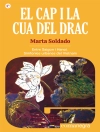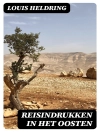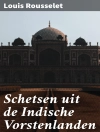In ‘An Explorer’s Adventures in Tibet, ‘ Arnold Henry Savage Landor presents a captivating narrative that intertwines vivid travelogues with insightful cultural observations. The book is marked by Landor’s eloquent prose, rich with detailed descriptions of the Tibetan landscape and the diverse communities he encounters. Written during a period of Western fascination with the East in the late 19th century, this work captures the spirit of exploration and the yearning for understanding that characterized the Victorian era. Landor’s blend of adventure and anthropological reflection invites readers to experience Tibet not merely as a destination but as a realm filled with spiritual depth and complexity. Arnold Henry Savage Landor, an accomplished traveler and painter, was driven by a profound curiosity about the world and its cultures. His extensive journeys through Asia were fueled by his desire to document and understand the lives of the people he met. Landor’s personal narrative is enriched by his background, which combines an artistic sensibility with a scholarly approach to the diverse customs and landscapes he encountered, making his perspectives both unique and credible. Readers seeking a profound yet adventurous examination of Tibet’s vast and intricate tapestry will find ‘An Explorer’s Adventures in Tibet’ an essential read. Landor’s work not only entertains but also serves as a crucial historical document, inviting scholarly discourse on the interplay between Western explorers and Eastern cultures.
关于作者
Arnold Henry Savage Landor, born in 1865 in Florence, Italy, to English parents, was a notable explorer, painter, writer, and anthropologist characterized by his indomitable spirit of adventure and keen observational skills. Of his numerous travels and explorations, one of the most significant was his journey to Tibet, which he vividly chronicled in his book ‘An Explorer’s Adventures in Tibet’ (1898). This work not only reflects Landor’s intrepid exploits but also his literary flair, imbued with detailed descriptions, personal anecdotes, and a narrative style that brings the remote Tibetan landscape and its culture to life for Western readers. Landor’s accounts stand as early ethnographic records, albeit sometimes criticized for their sensationalism and occasional embellishment. Nevertheless, his writings provided one of the earliest glimpses to the Western world of a profoundly isolated Tibet, its people, and customs at the turn of the 20th century. Landor’s body of work, including his contributions to travel literature and his artistic pursuits, demonstrates a multifaceted talent and has secured his place in the annals of Victorian-era exploration. His legacy endures through his books, which continue to be referenced by scholars interested in the historical context of exploration and the cultural interactions between the West and Tibet during that era.












